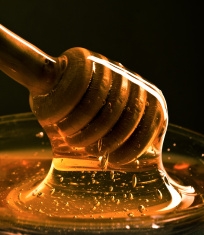

The positive effects of honey on people?s health are well known. These are due to honey?s high contents of minerals, vitamins, and oligoelements. However, sadly, there are a number of adulterated honey products in the market today.
Many of these are mixtures of honey with glucose solutions, or even low quality honeys with a high content of water, because they have been extracted from cells that have no operculum (not clogged with beeswax).
Fortunately, there are some simple tests that you can do at home in order to find out whether the honey you hav purchased is pure and high quality, or else, it has been adulterated, or has too much water.
Read the label.
The first thing you should do before buying a jar of honey is read the label, and check that the list of ingredients does not include ?fructorse syrup? or commercial glucose. These are two additives frequently used to dilulte honey and avoid its solidification.
All honey is liquid, but in time it will solidify or become sugary. If you buy a jar of honey that has already crystalized, it will be pure honey. If you have a jar of liquid honey, you can wait a few days to see if it solidifies. Also, you can put it in the refrigerator to accelerate the process. If that honey never becomes crystalized, there is a high chance that it is adulterated honey.
These are a few simple tricks that can help you see whether you have purchased pure honey, or if it has been adulterated in any way, or else has a high humidity.
As you can see, these simple tests can help you corroborate the quality of the honey you are buying, and that way you will be able to choose the purest honey, so that you can take maximum advantage of all the benefits of including honey in your diet.